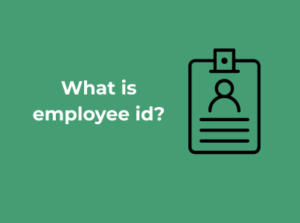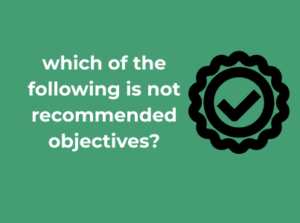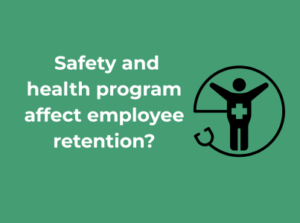Have you ever paused to think about how marketing for services is unlike marketing for products? It’s a fascinating difference worth exploring. Services, unlike products, aren’t something you can physically touch or take home in a bag. And that changes everything when it comes to marketing strategies. Let’s dive into why this shift matters and how marketers can embrace it.
Understanding the Intangibility Factor
When you market a product—a laptop, a pair of sneakers, or even a coffee mug—you have something tangible to showcase. A product can be photographed, held, and physically experienced before purchase. But with services, things are a bit different. Services are inherently intangible. Think about hiring a personal trainer or signing up for a subscription to an online course. There’s no physical item to hold up and examine—it’s all about the process, the experience, and the outcomes.
This intangibility means that the way you communicate value has to shift. Instead of showcasing how “sleek” or “sturdy” a product is, service marketing involves building trust and helping people picture the outcome of choosing your service.
The Irreplaceable Role of Experience
Another key difference is that services aren’t just “sold”; they’re experienced. To put it simply, services are co-created between the provider and the customer. For example:
- When you visit a spa, the relaxation you feel isn’t solely thanks to the luxurious surroundings. It’s also about how the staff interacts with you and tailors the experience.
- When you hire a consultant, their advice is just one piece—the success comes from how you act on their recommendations.
Since the customer’s participation directly shapes the final “product,” service providers can’t just focus on selling one-size-fits-all solutions. They need to emphasize personalization and flexibility in their marketing.
Perishability: Use It or Lose It
Here’s another fun fact about services: they’re perishable. Unlike a product, which can sit on a shelf until it’s sold, services exist in a specific moment in time. A gym class with unfilled slots at 6 PM, for example, simply disappears once the clock strikes 7 PM. There’s no inventory to save for later.
This perishability challenges marketers to adopt time-sensitive strategies. How can you fill those empty spots? Discounts on last-minute bookings, promotions for off-peak demand, or bundling services with limited time offers are often clever solutions. It’s not about just showing off what you offer but about creating urgency for customers to act now.
Real People, Real Interactions
Finally—something that’s crucial to understand when shifting from product to service marketing—is the central role of people. In service marketing, the team delivering the service IS the product in many ways. Have you ever walked out of a restaurant thinking, “The food was great, but the service really made it special”? That’s exactly what we’re talking about.
Customers remember how they were treated just as much as (if not more than) the actual service they received. Whether it’s a friendly smile, an attentive ear, or going the extra mile, human interactions define the customer’s experience—and that’s something you can’t put a price tag on.

Connecting Emotion to Interaction: The Core of Service Marketing
Let’s talk about emotions. They’re not just for movies, heartwarming commercials, or tear-jerking moments in books. Emotions are at the heart of service marketing. In the world of selling services, connecting with your customer’s feelings during their experience often makes or breaks your business. Why? Because, unlike physical products, services are intangible—they can’t be touched, stored, or easily demonstrated. What can be felt, however, is the emotional connection your brand creates during every interaction. Let’s dive into why this matters and what you can do about it.
The “Feel Good” Factor
Have you ever walked into a café where everyone greets you with a smile, the barista remembers your name, and they whip up your coffee just the way you like it? That’s a perfect example of connecting emotion to interaction. Customers don’t just return because of the coffee (well, maybe a little)—they come back because of how they feel in that space. Service marketing thrives when businesses focus on creating experiences where people feel valued, understood, and, quite simply, good.
Think of companies thriving in industries like travel, hospitality, or healthcare. People remember and recommend such services not just because they met practical needs, but because of how they made them feel during the process. A cheerful airline crew on a bumpy flight, for instance, can still leave you feeling positive about the airline. That’s the power of emotion-driven interactions.
How Emotions Build Loyalty
In service marketing, loyalty often stems from trust and emotional resonance. A study by Harvard Business Review even highlighted that customers who feel “emotionally connected” to a brand are more likely to stick around, spend more money, and recommend the service to their networks. If your marketing strategy doesn’t aim to win hearts first, you may miss out on cultivating repeat customers.
Here’s where emotions matter across the customer experience:
- Excitement: Spark joy during the discovery stage by offering a memorable and unique value proposition.
- Trust: Use transparency in pricing and policies to reassure customers during decision-making.
- Relief and Satisfaction: Deliver seamless service that minimizes friction and makes customers feel taken care of.
Make Every Touchpoint Count
From the first click on your website to the final email after a purchase, every interaction is a chance to either strengthen or weaken that emotional bond. For service businesses, moments of interaction are unique opportunities to personalize and connect with customers. Consider the following tips:
- Train your team to look beyond the script: Authenticity in customer service wins every time. Personalized responses that actually solve a customer’s need go much farther than robotic replies.
- Leverage technology wisely: CRM tools and AI can help personalize offers or follow-ups, but don’t lose the human touch!
- Gather and act on feedback: Listen to your customer’s emotions—whether expressed in reviews, emails, or social media. Then, use that knowledge to improve their experience.
Invisible Yet Impactful: Tangibility Challenges and Opportunities
When it comes to marketing services, one of the trickiest hurdles is their intangible nature. Unlike products, which customers can physically touch, feel, or see, services are often invisible and exist in the realm of experiences. This intangibility presents a unique challenge: how do you effectively market something that can’t be held or examined? It’s not all bad news, though. With the right strategies, this “invisibility” can actually become one of your biggest assets.
Understanding the Core Issue: Intangibility
Products like smartphones or shoes are tangible; customers can inspect them before making a purchase. Services, however, rely on trust and perception because they are consumed as an experience. For example, when you book a hotel, you’re buying into an expectation of comfort, cleanliness, and hospitality—things you can’t fully verify until you’re there.
This lack of tangibility can make it harder for customers to evaluate the quality of a service before they buy it, which means a big part of the marketer’s job is to build confidence and convey value clearly.
Opportunities in Overcoming Tangibility Challenges
While it might feel daunting to sell something that isn’t visible, there are a variety of creative ways to turn this challenge into an opportunity:
- Providing Visual Proof: One way to make the intangible more tangible is by offering visual representations of what customers can expect. For instance, including pictures or videos of a hotel’s luxury rooms, spa facilities, or smiling staff members can help create trust and a sense of connection.
- Focusing on Case Studies & Testimonials: Social proof is a powerful tool when marketing services. Showcase customer reviews, success stories, or testimonials to let potential buyers see how others have benefited from your offering.
- Offering Free Trials or Samples: When possible, let people “test” your service. A free month of a streaming service or a complimentary consultation for a legal firm can help break the barrier of uncertainty, making it easier for prospective clients to understand the value being provided.
Building Tangibility Through Branding
Your brand is your most powerful ally in overcoming intangibility. Strong branding creates a tangible impression in the customer’s mind, even before they try your service. Here are a few quick ways to do just that:
- Define Your Unique Value Proposition (UVP): What sets your service apart from the competition? A memorable UVP helps differentiate your offering and establishes what customers can expect.
- Emphasize Consistency: Consistent visuals, messaging, and customer experiences build trust. The more cohesive your brand is, the easier it is for customers to believe in your service.
- Highlight Results: Instead of focusing on explanations, focus on the outcomes your service provides. Transform abstract offerings into measurable benefits—for example, “Save 20 hours per week with our productivity app.”
The Human Touch: Building Trust in Service-Based Businesses
In the world of service-based businesses, the bond between a company and its customers goes beyond products—it’s deeply personal. Trust is the currency of any successful service interaction, and building this trust is not just a business strategy but an art. Let’s dive into why the human touch is so vital and how you can create meaningful, trust-driven relationships with your customers.
Why Does Trust Matter in Service Marketing?
Unlike physical products, where customers can see and touch what they’re buying, services are often intangible. This makes trust the cornerstone of service marketing. For instance, booking a hotel or hiring a consultant often comes down to the customer’s confidence in the service provider. If trust is lacking, chances are, they won’t take the leap.
When a customer believes in your service, they’ll not only choose you—they’ll advocate for you. That’s the magic of trust. It creates lifelong relationships and drives word-of-mouth marketing, one of the most powerful channels for service-based businesses.
How Do You Build Trust?
Trust isn’t something that happens overnight—it’s earned piece by piece through every interaction your business has with its customers. Here are some actionable steps to foster it:
- Be Transparent: Start with clear communication. Whether it’s pricing, processes, or timelines, don’t leave your customers guessing. Transparency not only builds confidence but also ensures there are no unpleasant surprises down the line.
- Deliver on Your Promises: Keeping your word is the foundation of trust. If you promise something, commit to it wholeheartedly. For instance, if you say a repair will be completed within three days, make every effort to meet that deadline.
- Be Accessible: Customers want to know they can reach you when they have a question or concern. Offer clear avenues for communication, whether it’s through chat, email, or in-person support. A quick, empathetic response can make all the difference.
- Show Empathy: Your customers need to feel heard and understood. Listen actively and respond with compassion. Empathy humanizes your brand and shows customers that you see them as more than just a transaction.
The Role of Your Team in Building Trust
Your service team is your trust-building powerhouse. Every interaction between your staff and your customers is an opportunity to strengthen the relationship. This is why hiring, training, and empowering your team is so critical.
Train your employees to reflect the core values of your company. Encourage them to go the extra mile, like remembering customers’ preferences or resolving issues proactively. A little kindness and thoughtful behavior can turn a skeptical customer into a loyal advocate.
Technology Meets Humanity: Striking the Right Balance
In this digital era, many service-based businesses integrate AI and automation to enhance efficiency, but here’s the catch—don’t lose the human touch. Use technology as a tool, not a replacement. For example, while chatbots can answer frequently asked questions, ensure customers can still speak to a live person when needed. Authentic human connections, even in the digital world, set your service apart and make it memorable.

The Importance of Retention: Why Loyalty Wins in Service Marketing
When it comes to service marketing, we often hear a lot about attracting new customers, but let’s press pause on that for a second. Have you ever stopped to think about the power of customer retention? Buckle up, because this is where the real magic happens for service-based businesses. Retaining your existing customers isn’t just important, it’s critical to long-term success—and I’m here to tell you why!
Retention: The Superstar of Business Growth
Here’s the golden nugget: returning customers are your most valuable asset. Research consistently shows that it costs five to seven times more to acquire a new customer than to keep an existing one. Yet it’s not just about cost efficiency. Retained customers tend to buy more often, spend more per transaction, and—don’t miss this—recommend your business to others.
With services, you’re not selling a tangible product where loyalty might come by default. Instead, you’re delivering an experience. This means that if a customer had a meaningful interaction with your service, they’re far more likely to return for more or even become a vocal advocate of your brand. So being proactive in cultivating loyalty can really position your business to stand out in a crowded market.
Why Loyalty Is Crucial for Services (Hint: It’s Trust!)
Services are deeply tied to trust. Think about it: when you stay loyal to a hairstylist, financial advisor, or even your favorite coffee shop, it’s because they’ve consistently delivered on your expectations. You trust that when you go back, you’ll get the same excellent service (or better).
Building that trust takes time, but once it’s there, the payoff is phenomenal. Loyal customers don’t just stay; they engage more, worry less about competitive offerings, and often forgive the occasional hiccup. Essentially, they see you as part of their life—and that’s priceless.
How to Prioritize Retention in Service Marketing
Now, let’s get practical. What can you actually do to build loyalty among your customer base? Here are some strategies that work wonders:
- Deliver Consistent Quality: The easiest way to turn a one-time customer into a loyal one is to exceed expectations every single time. Consistency is key in building trust.
- Focus on Personalization: Everyone loves feeling special, right? Invest in personalizing your services—this could be as simple as remembering a customer’s preferences or sending a tailored thank-you note.
- Stay Engaged: Stay top of mind by keeping in touch through follow-ups, thoughtful emails, or even exclusive offers. A deeper connection keeps the relationship alive.
- Reward Loyalty: Who doesn’t love a good loyalty program? Discounts, points, or VIP benefits are great incentives for customers to stick around.
- Listen and Improve: Actively seek feedback. Show your customers that you care about their opinions and want to evolve to better serve them.
The Ripple Effect of Retention
Retention is not just about the immediate benefits of a returning customer; it sparks that amazing ripple effect. Satisfied, loyal customers become brand ambassadors. They share their positive experiences with friends, family, or even on social media. This word-of-mouth marketing is invaluable—and let’s be real, it’s a thousand times more persuasive than any ad you could ever create.
So, when planning your service marketing strategy, remember: loyalty is a long game worth investing in. The more you focus on nurturing existing customers, the more stable and sustainable your business growth will be.
Adapting Strategies for the Digital Age: Key Changes in Service Marketing
Ah, the digital age—a realm where connectivity is king, convenience is queen, and everything moves at lightning speed. For service-based businesses, this transformation is nothing short of revolutionary. Adapting your strategies for the digital age isn’t just an option anymore; it’s a necessity for thriving in today’s highly competitive market. Let’s dive into what makes this shift so exciting (and challenging) and how you can stay ahead of the curve!
1. The Game-Changer: Digital Channels Redefine Communication
Gone are the days when potential customers would rely solely on word of mouth or traditional advertising to find the perfect service provider. Now, they start with an online search (because who doesn’t love Googling their way out of a problem?). Your digital presence is often your first impression, and we all know how important that is.
To adapt, consider the following tips:
- Create a user-friendly website: Your site should be easy to navigate, optimized for mobile, and lightning-fast. Nobody has time for slow-loading pages!
- Leverage social media wisely: Platforms like Instagram, LinkedIn, and Facebook allow you to engage directly, share value-driven content, and build a community. Show the personality of your brand!
- Lean into SEO: You can’t be visible online if people can’t find you. Research keywords your audience searches for and create content that answers their questions.
2. Real-Time Customer Interaction
Expectations in the digital age have skyrocketed, and customers now want real-time support that doesn’t force them to wait for hours or even minutes. For service marketing, incorporating tools like chatbots and live chat options can truly enhance your customer experience. Best of all, these tools allow you to interact even outside regular business hours, perfect for the 24/7 digital lifestyle.
Quality matters though—don’t lose the human touch. Use automation to handle general queries but always ensure there’s a way for customers to get real, personalized support when they need it.
3. Personalization is the Gold Standard
In the digital world, customers expect experiences that feel tailored to them. This is where personalization becomes your magic wand. The treasure trove of customer insights provided by digital tools, like analytics platforms and CRM systems, allows you to create offers, services, and interactions that speak directly to each customer’s preferences and behaviors.
How can you bring personalization to life?
- Send targeted emails: Use customer data to provide offers or updates that match their interests.
- Utilize retargeting ads: These gentle reminders of services they’ve browsed or engaged with can be the nudge they need to make a decision.
- Provide tailored recommendations: Based on their past behavior, suggest relevant services they may not even know they needed!
4. Reviews and Online Reputation: The New Trust Factor
When was the last time you booked a service without glancing at the reviews? That’s right—likely never. In the digital age, your reputation often lives and dies by the opinions enthusiastically shared on platforms like Yelp, Google Reviews, and social media.
The solution? Be proactive! Encourage happy customers to share their experiences online, and always respond to reviews—positive or negative—with professionalism and gratitude. Potential clients will appreciate your attention to customer satisfaction.
5. Evolving Alongside Technology
The digital era is fast-paced, and trends can shift in the blink of an eye. Staying on top of emerging technologies—whether it’s AI, augmented reality, or new social platforms—ensures your service-based business stays relevant. For example, imagine integrating virtual consultations via video calls or using AI to predict customer needs before they even know they have them. It’s both futuristic and practical!
Actionable Steps: Implementing Service-Focused Campaigns
Okay, so you’ve wrapped your head around the unique challenges and opportunities of marketing services. Great! Now, how do you take that insight and turn it into action? Let’s roll up our sleeves because this is where all the strategizing comes to life. In this section, we’ll cover some practical, easy-to-follow steps for launching campaigns that truly resonate with your audience.
1. Define Your Unique Service Proposition (USP)
Start with the basics: what sets your service apart? Chances are, you’re not the only one in your field, but what *makes* you different? Do you offer more personalized experiences? Faster delivery times? A stunning track record of success?
Be sure to craft a compelling and distinct USP that highlights the value you provide. Your USP will serve as the North Star for every campaign you create. A clear, concise message will make your marketing efforts much more cohesive and targeted.
2. Map Out the Customer Journey
Services often involve multiple touchpoints, from initial inquiries to the final handshake (or mouse click). Understanding the customer journey is crucial in services marketing. Create a roadmap outlining every step your customers take, paying attention to their emotional and informational needs throughout.
- What pain points do they experience at different stages?
- When are they most likely to seek reassurance?
- Where is the opportunity to go above and beyond?
Align your campaigns to meet these needs. For example, introducing an educational blog series can help ease potential customers’ fears in the research phase, while strong testimonials or guarantees can provide reassurance during the purchasing decision.
3. Embrace Storytelling
People don’t just buy services—they buy stories, emotions, and connections. Use storytelling as the backbone of your campaigns. Share narratives about how your service has positively impacted customers or solved real problems. Authentic stories build trust and humanize your brand.
A memorable story doesn’t need to be overly complicated—sometimes, a simple “Before” and “After” scenario can work wonders. Keep it genuine, relatable, and relevant to the audience you’re hoping to attract.
4. Leverage Social Proof
When it comes to services, trust is everything. And nothing builds trust like social proof. Feature customer reviews, video testimonials, case studies, or even user-generated content prominently in your campaigns.
Here’s a tip: don’t just focus on glowing reviews. Address concerns and questions through your customers’ experiences. For example, a testimonial that shares how your company quickly resolved a hiccup is often more believable than one that paints an overly perfect picture.
5. Optimize for Engagement, Not Just Reach
In service marketing, it’s about quality over quantity. Sure, you want a big audience, but what’s more important is creating genuine interactions. Craft campaigns that invite responses, whether it’s through polls, Q&A sessions, live chats, or interactive content like quizzes.
For example, if you’re a financial consultant, you might share a quiz titled “What’s Your Financial Personality?” Not only does it engage people, but it also helps them better understand their needs—priming them for your services.
6. Test, Refine, Repeat
Every campaign is an opportunity to learn more about your audience. Use analytics tools to track performance, whether it’s website clicks, engagement rates, or customer retention post-campaign. Identify what works and what doesn’t, and don’t be afraid to make adjustments. Marketing is just as much about experimentation as it is about planning.
Break your campaigns into bite-sized pieces for testing—you don’t have to perfect everything on the first go. A/B testing subject lines, visuals, or CTA buttons can provide useful insights to fine-tune your efforts.






